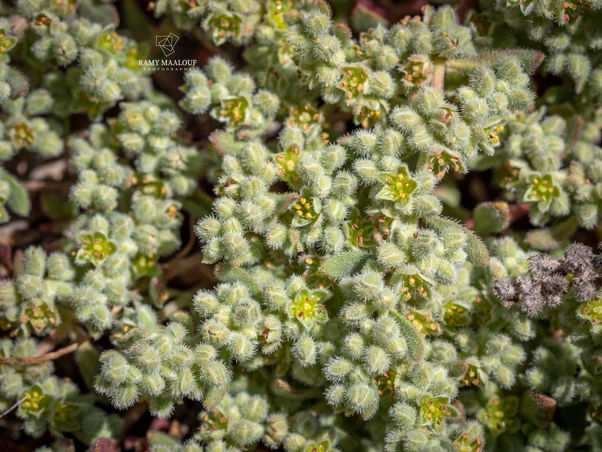Family |
Caryophyllaceae
Herniaria incana
Lam.
Herniaria incana Lam.
(Encycl. 3: 124; 1789. — Nouvelle Flore du Liban et de la Syrie, vol. 1, p. 454; 1966)
• Life-form & habit: Perennial herb, velvety-canescens, with hard, somewhat woody stems at the base, prostrate, long, and branched, up to 30 cm, light green or reddish.
• Leaves: Oblong, canescent or green, more or less densely hispid with short hairs. Stipules short, truncate, connate at the base of the leaf pairs.
• Inflorescence & flowers: Glomerules of 3–6 flowers, densely grouped at the ends of the ultimate branches, forming leafy racemes.
• Calyx: 5 sepals, oblong-ovate, hirsute, somewhat accrescent.
• Stigmas: Subsessile.
• Fruit: Not detailed in Mouterde; as in genus, a small utricle enclosed by persistent sepals.
• Phenology: Flowers May–July .
• Habitat & elevation: Pastures, degraded woodlands.
• Lebanese distribution: Mi. Chemlan; Mm. Dahr-el-Baidar, Jabal Barouk, Jabal Kneissé, Hadeth, Hasroun, Bcharré, Qannoubine, Afqa, Cedars, Ehden; Ve. Hazerta; Hermon: Rachaya.
• Syrian distribution: Anti-Lebanon between Rachaya and Damascus (Boiss.); Hermon (Mejdel-ech-Chams, above ‘Arné); Jabal Druze: Chahba.
• Native range: Europe (central and southern), North Africa, and Western Asia including Lebanon–Syria, Turkey, Iran, Iraq. (POWO)





